
When the wind is strong (over 20km/h on the ground) the wing generates a lot of power during the pullup. Here’s a simple technique for reducing the power and staying in control. This short article with images explains the basics of the technique step by step. The accompanying video at the end then demonstrates it. After that, it's up to you to practice, practice, practice!
Bracing yourself, digging your heels in, and leaning back hard are all recipes for a disastrous launch. You must run the wind off – move!
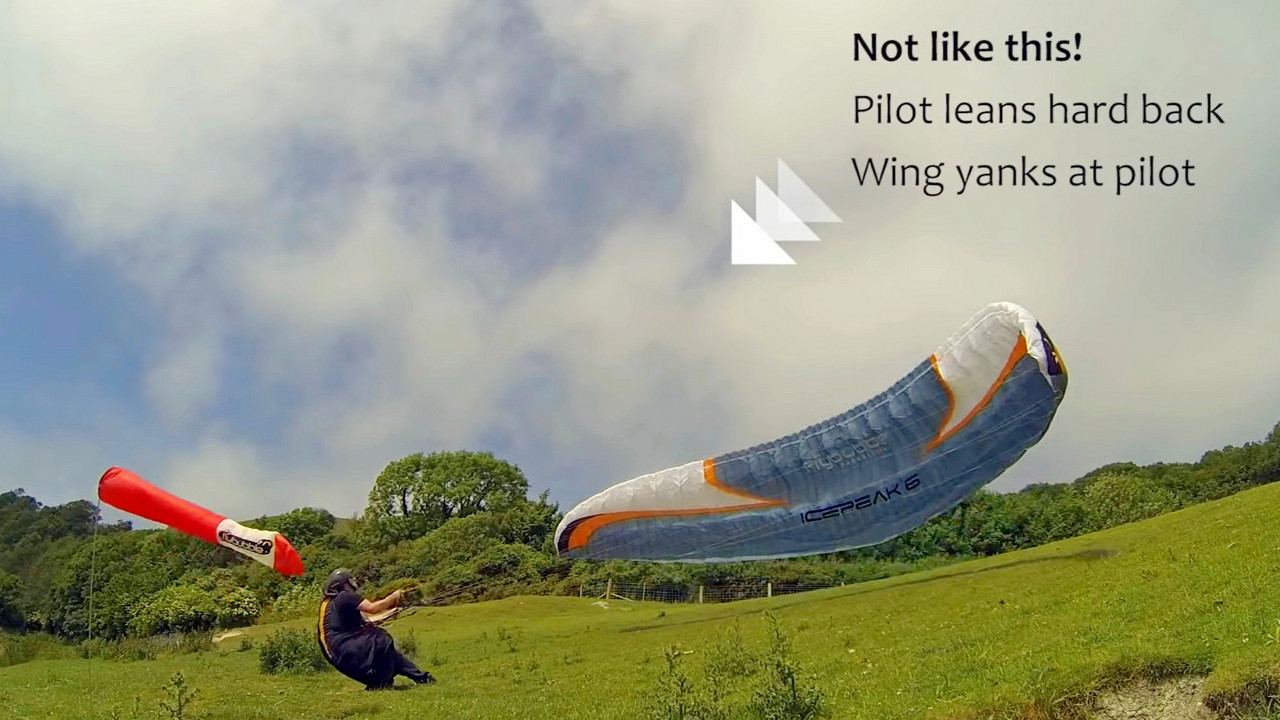
This is not just allowing the wing to drag you back (inevitable). The trick is to run before the wing kicks you. It does this at 45 degrees as it really bites into the wind.
There is always a wind gradient on launch sites. The wind you feel can be up to 10km/h less than your wing will encounter because the ground obstacles slow the surface wind. So when the wing gets up there, it kicks. If you’re already moving with the wind, this force is reduced and you can stay on your feet.
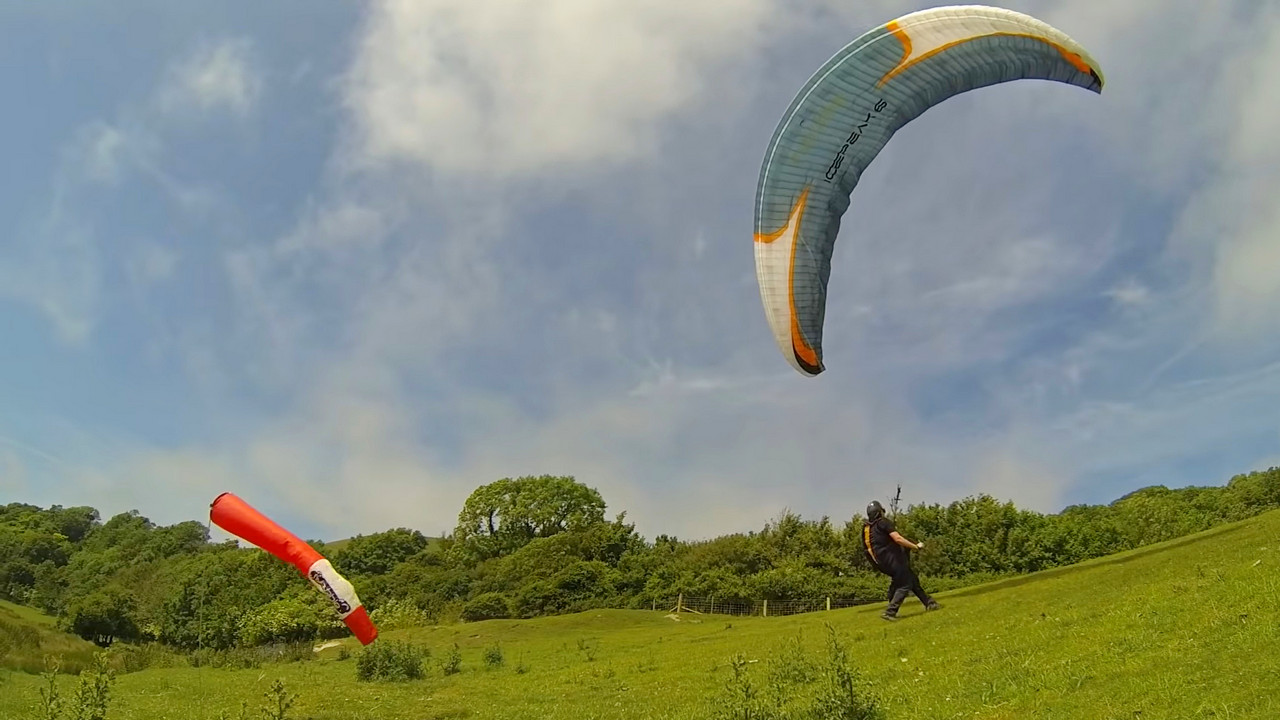
The faster you run, the more time you have to check the wing as it rises. You also have more time to kill the wing using the brakes if you feel too much force.
As the wing reaches the top, you can lean back in your harness to avoid being pulled downwind then spin to face forward, ready to fly. Keep your stance low so you can keep contact with the ground.
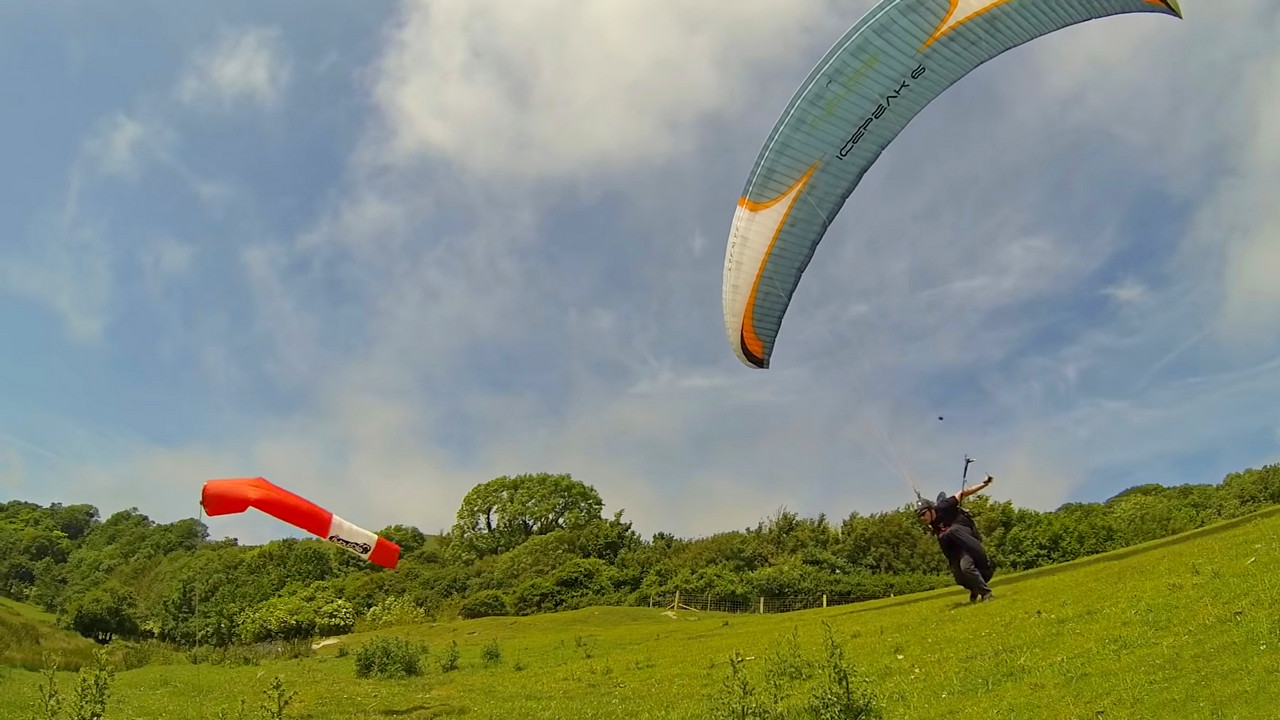
Another way to slow the acceleration during the pullup is to use both the As and the Bs. You’ll get much less acceleration. The wing I use in the video does this automatically, because it’s a two-liner, which is why I don’t get a very dramatic ‘pluck’ when I yank it up (on a two-liner, the front lines support the area of the wing usually supported by both A and B cascades).
Using an assistant (anchor) in strong wind is not necessary. They tend to pin you in position which increases the speed of acceleration and makes things worse.
It’s good to practice this on a shallow slope, then progress to steeper launch sites. The steeper the hill, the more the kick will try to lift you off your feet. The wing also wants to shoot further ahead, due to the angled airflow. So controlling the power is more important.
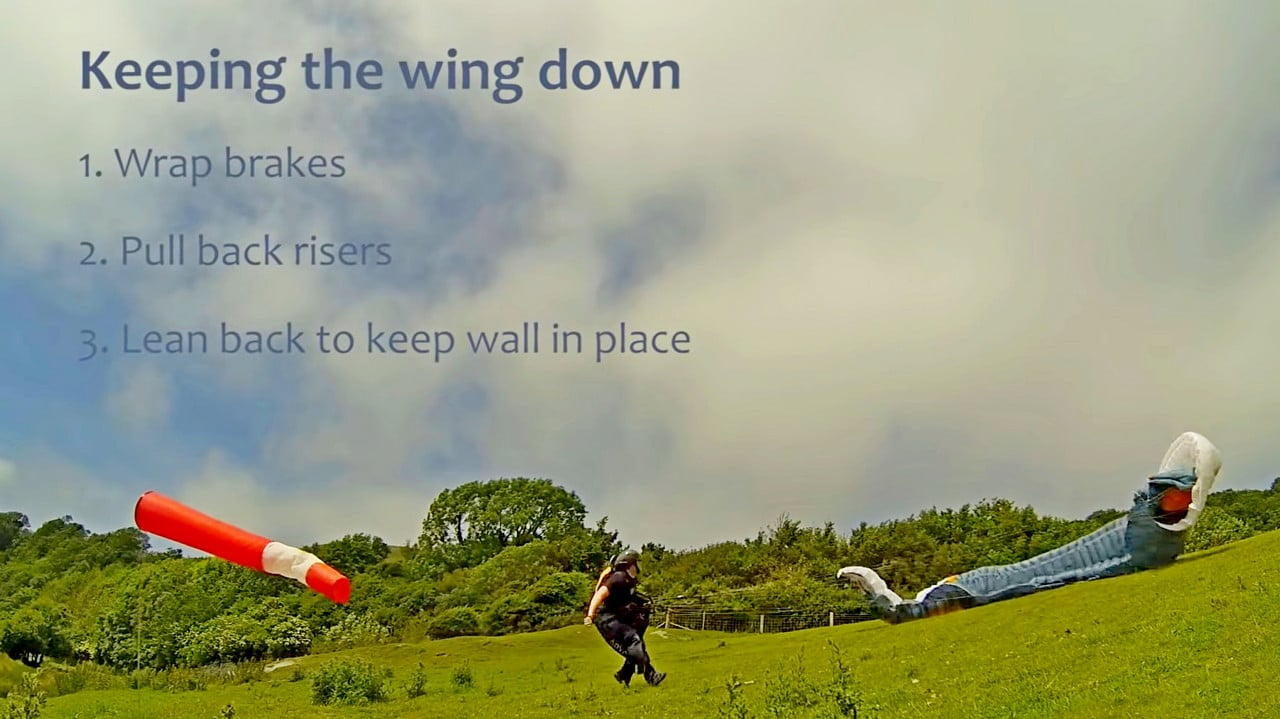
Keeping the wing down
1. Wrap brakes
2. Pull back risers
3. Lean back to keep the wall in place
Point 1 is often not necessary if Point 2 works well on your wing. Experiment, find out what works for you. Point 3 is often the reason why you can’t keep your wing on the ground. Pulling too much brakes (because you’re worried about the force of the wind) makes the trailing edge flap up and leads the wing in a merry dance. Lean back so the As are scooping air into the wing and keeping it in a stable position. If it isn’t stable (jump, jump, jump) try stepping to one side, to remove the burble (lee-side rotor) by changing the airflow over the wing. Check the wind before you pull up. Now you’re ready...
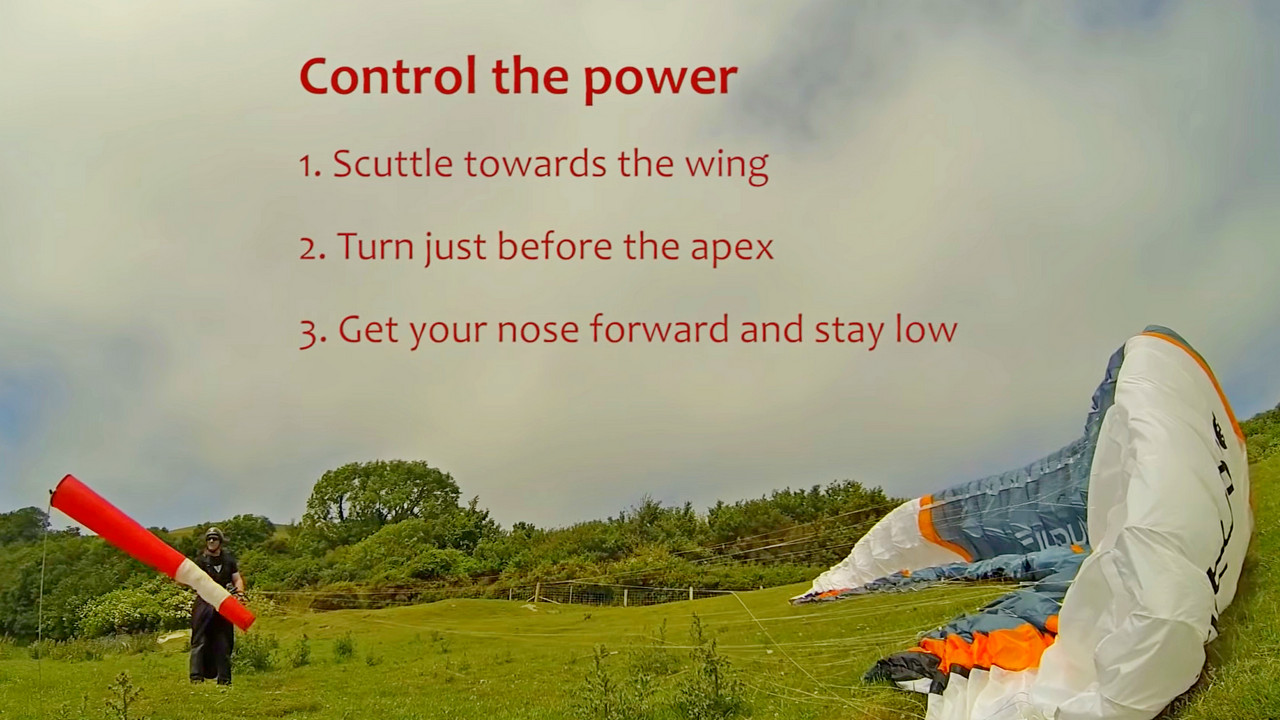
Control the power
1. Scuttle towards the wing
2. Turn just before the apex
3. Get your nose forward and stay low
Strong Wind Launching (Simple Depower) video
Be warned, not everyone likes music choice on this one... actually, many seem to really hate it! 😱
Brought to you by Flybubble
Like what we do? The best way to thank and support us is to buy gear from us and recommend us to others. Review our service on Trustpilot and our products on Flybubble Shop. You can also subscribe to Flybubble Patreon. Thank you!

